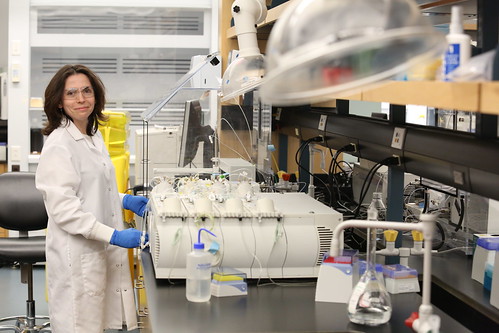
 Environmental Protection311
Environmental Protection311 Search all NYC.gov websites
Search all NYC.gov websites
Drinking Water Monitoring
We monitor our water starting from the feeder streams that supply our reservoirs all the way to our street-side sampling stations located in every neighborhood in New York City. Each year, our scientists collect thousands of samples that are analyzed hundreds of thousands of times in our water quality laboratories. We conduct analyses for perameters including microbiological, chemical, and physical measures. To learn more about our drinking water monitoring programs as well as view our water quality testing results, read our annual Drinking Water Supply & Quality Report.
To learn more about some common reasons for observing changes in your drinking water, visit Drinking Water FAQs.
Monitoring for Lead
New York City water is virtually lead-free when it is delivered from the City’s upstate reservoir system, but water can absorb lead from solder, fixtures, and pipes found in the plumbing of some buildings or homes. It is possible that this can increase your potential for exposure. Visit Monitoring for Lead to learn more.
Monitoring for Pathogens
We began monitoring for the protozoa Cryptosporidium and Giardia in 1992 as part of our comprehensive watershed monitoring program. Today, we analyze over 500 samples each year from nearly 50 sites, including the effluent of the Kensico Reservoir (Catskill/Delaware System) and the influent to the Croton Filtration Plant Croton System. These two sites are designated as New York City’s source water, which means that they are representative of the water prior to treatment including disinfection by chlorine and ultraviolet light. In addition to routine monitoring, we may occasionally collect protozoan samples in response to heavy rainfall or for research projects or other special investigations. Visit Monitoring for Pathogens to learn more.
Street-Side Drinking Water Sampling Stations
Our street-side drinking water sampling stations allow us to sample our water at the end point of the city’s distribution system, just before it enters the local service line that connects to your building. Our water quality scientists are out collecting samples from these stations every day, 365 days a year, rain or shine. Each month, they collect more than 1,300 water samples from up to 546 locations. Our scientists analyze these samples for bacteria, chlorine levels, pH, inorganic and organic compounds, turbidity, odor, and many other water quality indicators.
The locations of the sampling stations are arranged so that collectively, they provide representative samples of water from all distribution areas in New York City. Factors such as population density, water pressure zones, proximity to water mains, and accessibility determine the location of each station. Currently, we have a total of 965 sampling stations citywide.
The stations rise about 4 1/2 feet above the ground and are made of heavy cast iron. Inside, a 3/4 inch copper tube feeds water from a nearby water main into the station. Each station has a spigot that our water quality scientists will use to collect samples.



